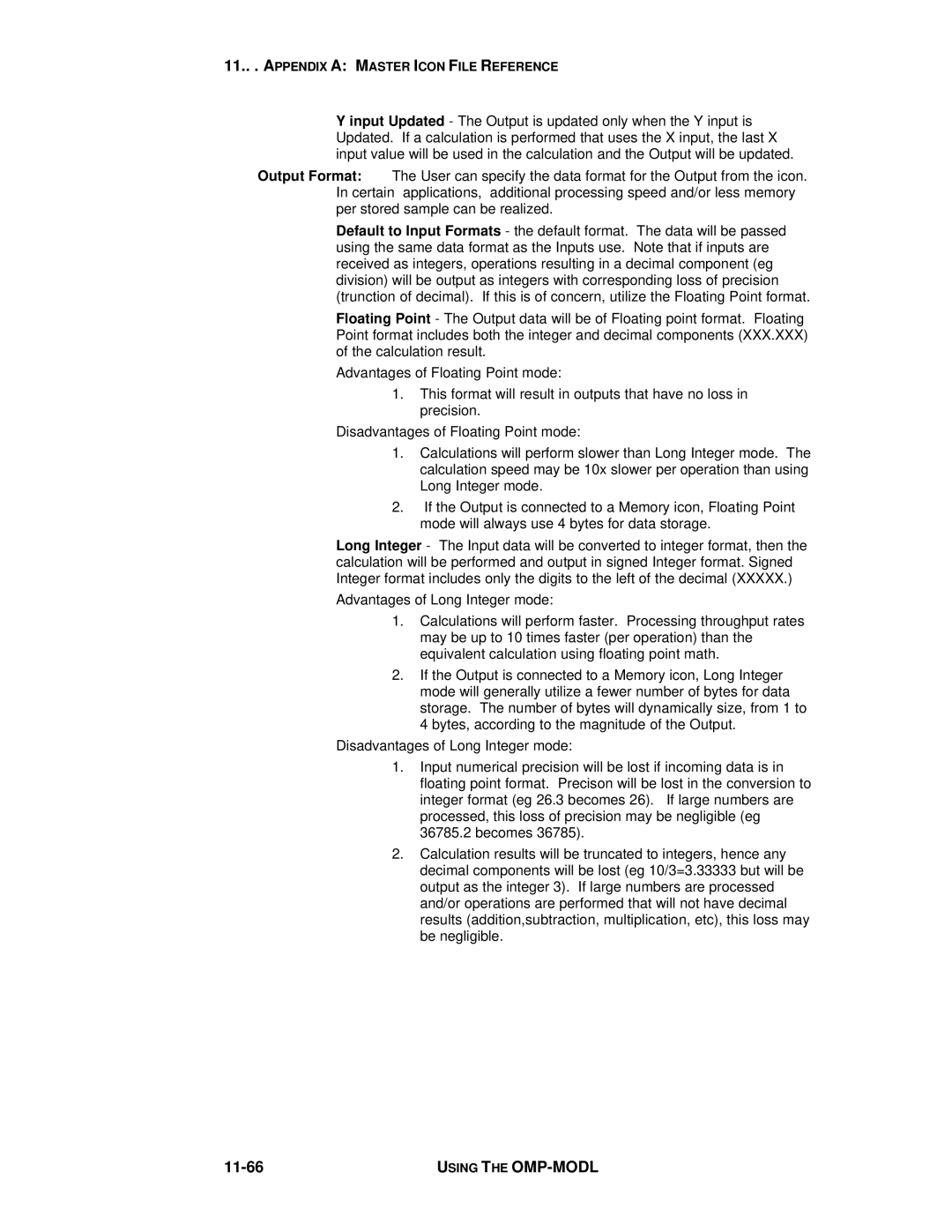11... APPENDIX A: MASTER ICON FILE REFERENCE
Y input Updated - The Output is updated only when the Y input is Updated. If a calculation is performed that uses the X input, the last X input value will be used in the calculation and the Output will be updated.
Output Format: The User can specify the data format for the Output from the icon. In certain applications, additional processing speed and/or less memory per stored sample can be realized.
Default to Input Formats - the default format. The data will be passed using the same data format as the Inputs use. Note that if inputs are received as integers, operations resulting in a decimal component (eg division) will be output as integers with corresponding loss of precision (trunction of decimal). If this is of concern, utilize the Floating Point format.
Floating Point - The Output data will be of Floating point format. Floating Point format includes both the integer and decimal components (XXX.XXX) of the calculation result.
Advantages of Floating Point mode:
1.This format will result in outputs that have no loss in precision.
Disadvantages of Floating Point mode:
1.Calculations will perform slower than Long Integer mode. The calculation speed may be 10x slower per operation than using Long Integer mode.
2.If the Output is connected to a Memory icon, Floating Point mode will always use 4 bytes for data storage.
Long Integer - The Input data will be converted to integer format, then the calculation will be performed and output in signed Integer format. Signed Integer format includes only the digits to the left of the decimal (XXXXX.)
Advantages of Long Integer mode:
1.Calculations will perform faster. Processing throughput rates may be up to 10 times faster (per operation) than the equivalent calculation using floating point math.
2.If the Output is connected to a Memory icon, Long Integer mode will generally utilize a fewer number of bytes for data storage. The number of bytes will dynamically size, from 1 to 4 bytes, according to the magnitude of the Output.
Disadvantages of Long Integer mode:
1.Input numerical precision will be lost if incoming data is in floating point format. Precison will be lost in the conversion to integer format (eg 26.3 becomes 26). If large numbers are processed, this loss of precision may be negligible (eg 36785.2 becomes 36785).
2.Calculation results will be truncated to integers, hence any decimal components will be lost (eg 10/3=3.33333 but will be output as the integer 3). If large numbers are processed and/or operations are performed that will not have decimal results (addition,subtraction, multiplication, etc), this loss may be negligible.
| USING THE |
